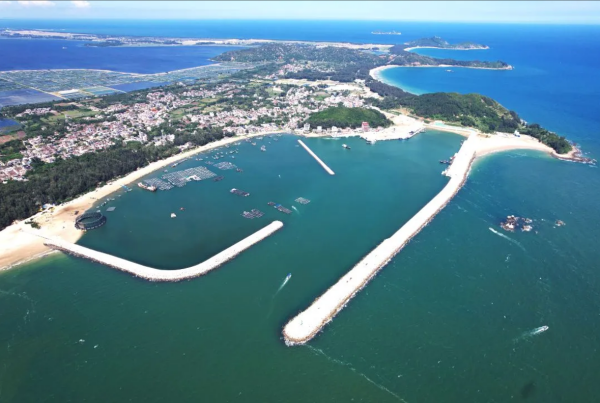From above, Wanning’s Wuchang Fishing Port’s breakwater resembles outstretched arms, sheltering fishing boats in calm blue waters. Beneath the surface, these waters are now home to transplanted corals — part of a large-scale relocation effort carried out during the port’s construction.

An aerial view of the Wanning’s Wuchang Fishing Port [Photo/sasac.gov.cn]
Built by CCCC Third Harbour Engineering Co., Ltd., a subsidiary of China Communications Construction Company Limited, the Wuchang Fishing Port features a 2.3-kilometer breakwater, 972 meters of quay shoreline, and 20 public berths, covering 75 hectares of water area — the largest of its kind in Hainan.

Corals on the nursery beds [Photo/sasac.gov.cn]
Construction posed risks to nearby Dadan Stone waters, home to staghorn, cup, and turbinaria corals. After a month-long underwater survey, marine experts selected the waters near Ganzhe Island as the new home for the corals due to its excellent water quality, calm seas, and presence of similar coral species.
Technicians carefully removed corals measuring 5–40 cm in diameter using hand tools, transported them in live-water tanks, and fixed them onto artificial reefs and stainless steel nursery beds in the new site. Large corals were attached to reef structures, while smaller branches were secured using a “grafting” method.
Over 50 workers spent a week deploying more than 400 artificial reef units and several 600-kg nursery beds offshore. In total, 5,102 corals were successfully transplanted in 23 days.
To protect remaining corals, the team installed silt curtains, added geotextile layers during construction, and built culverts at the breakwater’s base to improve water circulation and reduce pollution risks.
This large-scale coral relocation marks a significant step in balancing marine infrastructure development with ecosystem conservation in Hainan.
(Executive editor: Yuan Ting)